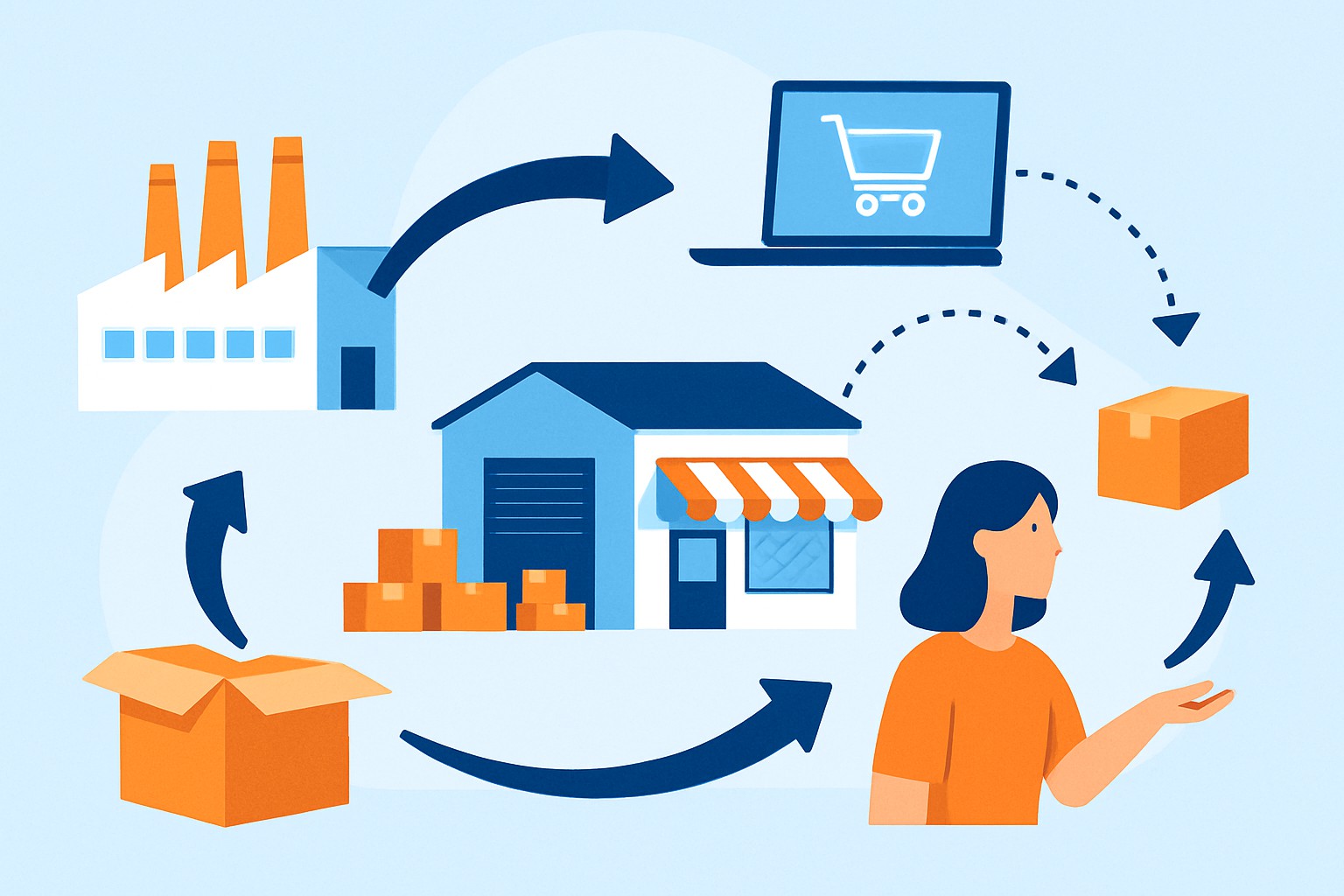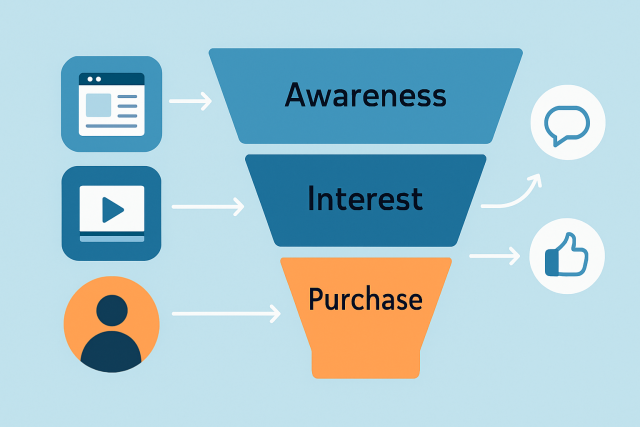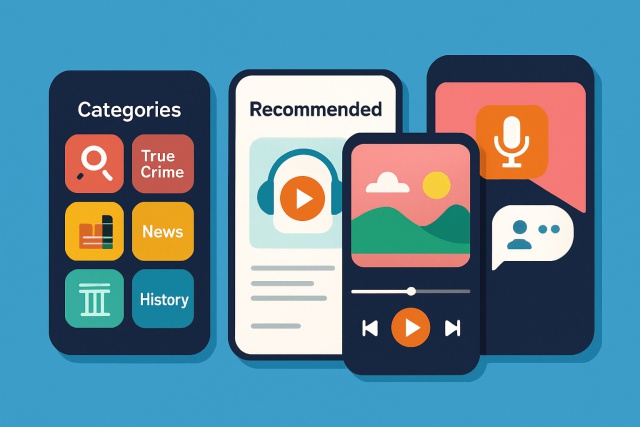What Are Distribution Channels and Why They Matter?


Distribution channels play a key role in business and marketing, even though they’re often a bit of a mystery to many people. Simply put, they’re the routes that products and services take from the hands of their makers—be it manufacturers or producers—straight to the customers eagerly waiting on the other end. These channels ensure that goods show up where and when people actually need them, which is pretty important if you ask me. Getting a good grip on what distribution channels are all about can really help illuminate how businesses stay connected with their customers, and why choosing the right channels often makes or breaks success.
What Exactly Are Distribution Channels Anyway
Distribution channels are basically the pathways products or services take to land in the hands of the final customer. Usually they involve a cast of characters like wholesalers and retailers acting as middlemen. Every now and then the product skips the usual pit stops and goes straight from producer to consumer.
- Manufacturer: The individuals who actually make the product, the ones behind the curtain.
- Wholesaler: They scoop up products in bulk from manufacturers and then pass them along to retailers, kind of like the middle-mile dealmakers.
- Retailer: These are the ones who put products right under customers’ noses, making the sale happen face-to-face or online.
- Agent/Broker: They link manufacturers with sellers but don’t hold onto the products themselves.
- Consumer: The all-important end user who picks up the product or service and actually puts it to work.
Distribution channels are like the delivery routes your favorite package takes. It stops by several spots like the warehouse, then a truck and maybe the post office before finally landing on your doorstep. In much the same way products journey through manufacturers, wholesalers and retailers before reaching your hands.
Different Types of Distribution Channels A Quick Tour
Businesses typically lean on a handful of familiar distribution channels to get their products out there. Direct channels usually involve selling straight from the producer to the consumer—think online platforms or company-owned stores that cut out the middleman. Indirect channels bring in the individuals like wholesalers or retailers, those trusty middlemen who help ferry products to customers far and wide. A lot of companies cleverly mix both direct and indirect approaches in what’s called multi-channel strategies, aiming to cast a wider net and catch more eyeballs.
| Channel Type | Description | Example | Advantages | Disadvantages |
|---|---|---|---|---|
| Direct | Producer sells products straight to the consumer | Apple selling iPhones via Apple Store | Gives you full control and lets you connect more personally with customers | Can be pricey and takes extra effort to reach buyers |
| Indirect | Producer relies on middlemen such as retailers or wholesalers | Coca-Cola sold through supermarkets | Casts a wider net and helps share the costs | You give up some control and have to split profits |
| Dual / Multi-Channel | Uses both direct and indirect sales methods | Nike selling via its website and retail partners | Offers a nice balance of flexibility and access to more customers | Juggling multiple channels isn’t always easy and might lead to conflicts |
| Reverse | Channels focused on returns, recycling, or repairs | Electronics makers accepting product returns | Great for supporting sustainability and keeping customers happy | Can get costly and logistics often turn into a headache |
Take Apple for instance. It mainly sells iPhones through its own stores and website which lets it stay close to customers and keep tight control over its brand like keeping your favorite recipe a family secret. Meanwhile, Coca-Cola leans heavily on indirect channels by teaming up with retailers and wholesalers all over the globe to get their fizz into everyone's hands. Companies like Nike often juggle multiple channels to cater to the diverse tastes and needs of their customers. There is no one-size-fits-all in their playbook. And then there are reverse channels that quietly do the heavy lifting in industries where returns are part of the game like electronics or fashion. These channels smoothly guide products back to manufacturers for returns and repairs.
The Importance of Distribution Channels
When it comes to getting your product into the hands of customers, distribution channels are the unsung heroes that often fly under the radar. They might not grab the spotlight, but without them, even the best product could end up just gathering dust on a warehouse shelf. In my experience, understanding and optimizing these channels can make all the difference between a smashing success and a flop. So, let’s dive in and unwrap why these pathways matter more than most people realize.
Picking the right distribution channels can really make or break how easy it is for customers to get your product. It also affects your costs and shapes your overall business efficiency. These channels directly impact sales volume, brand reputation, and the customer experience. When it comes to content strategy, the channels you choose determine how well your messaging and products resonate with your audience.
Distribution channels play a vital role in commerce, serving as the important pathways that shuttle products from producers to consumers—kind of like how blood courses through our veins, keeping everything alive and kicking.
- Effective distribution channels are like your business’s trusty sidekick, helping you reach broader markets and connect with a whole bunch more potential customers.
- They often give sales a nice little boost by making products easier to track down and buy, which is always a win.
- When distribution is convenient, it tends to up customer satisfaction and quietly builds loyalty over time because a smooth shopping experience is always appreciated.
- Streamlined channels can really help cut logistics costs, giving your profit margins a much-needed breather.
- Well-managed distribution sets the stage for better customer service through quicker delivery and more responsive support—little things that make a big difference.
Important Factors That Affect Choosing a Distribution Channel (and Why They Really Matter)
When it comes to picking distribution channels, businesses usually weigh several factors like the type of product, their target audience, costs involved, how much control they want to keep, what competitors are doing, and how emerging technologies might shake things up.
- The complexity of the product often dictates whether direct support or detailed explanations are needed—sometimes less is more.
- The size of the market and its geographic spread usually play a big role in shaping how wide and intense the channel strategy needs to be. It’s like casting a net: the bigger the pond, the broader you have to go.
- Customer buying habits are key too—some people love clicking away online while others still cherish the hands-on in-person experience.
- The resources a company can muster to manage a tangled web of channels often make or break how well the network operates. You really have to have your ducks in a row.
- Legal and regulatory factors can either throw a wrench in the works or open up a buffet of channel options, so keeping an eye on these is always wise.
The rise of e-commerce and digital tools have shaken up traditional distribution. Consumers expect to get what they want quickly and conveniently online. Many businesses are adding direct digital channels alongside their old-school networks. Technology is no longer just a nice-to-have; it has become the secret sauce for better inventory management, smoother logistics and personalized customer experiences.
Understanding the Role of Distribution Channels in Content Strategy Why They Really Matter
Content strategy and distribution channels go hand in hand. A carefully crafted message deserves the perfect channels to resonate and engage your target audience. Whether it’s websites, social media or brick-and-mortar stores, picking the right distribution channels ensures your content and products meet customers where they hang out.
- The company website serves as the go-to hub for all the nitty-gritty details and where people can make their purchases without fuss.
- Social media platforms are lively spots where customers get engaged and products get some well-deserved spotlight while a sense of community starts to flourish.
- Email newsletters drop in with personalized updates and special deals that make subscribers feel like insiders.
- Partnering with influencers is a savvy move to tap into wider audiences because sometimes the best way in is through a trusted voice.
- Retail stores offer a hands-on chance to see and feel the products which gives the brand experience more punch in person.
- Marketplaces like Amazon open the door to a much bigger crowd by plugging into their bustling customer networks.
Make sure your distribution channels truly line up with your content goals by really understanding where your audience prefers to get their info and shop around. I’ve found relying on data from SEO tools like Moz and Mangools can be a real game-changer when it comes to spotting the best channels.
Practical Ways to Give Your Distribution Channels a Real Boost
Take a good hard look at your current channels by diving into sales data, listening closely to customer feedback and getting a feel for how each channel is really performing.
Keep an eye out for those sneaky gaps where customer needs aren’t quite being met or where it seems like competitors might be pulling ahead.
Pick channels that genuinely jive with your product, budget and of course what your customers tend to prefer. It’s all about that perfect fit.
Make it a habit to regularly check your channel metrics using analytics tools and track everything from sales and traffic to engagement levels. The numbers don’t lie.
Be ready to tweak your strategy as the market shifts and technology marches forward. Customer needs naturally evolve over time. Staying flexible is key.
Take the case of a mid-sized outdoor gear brand that initially relied solely on retail partners but then took the plunge and launched a direct-to-consumer online store. They leaned on Moz's keyword research and site audit tools to polish their website to a fine shine and crafted content that truly spoke to their ideal customers. A solid 30% jump in sales over the year followed, along with livelier customer engagement and a much tighter grip on their brand identity.

Visual representation of various distribution channels connecting producers to consumers.
Common Misunderstandings About Distribution Channels That Often Trip People Up
- Distribution channels usually come into play more with physical products than with services, which can be surprising for some.
- Direct sales channels often perform better than expected, delivering improved results and higher profit margins.
- Digital channels typically work well alongside physical stores, more like a tag team than a complete replacement.
- Sticking to fewer distribution channels can definitely simplify day-to-day operations, but it’s not a one-size-fits-all solution.
- Distribution isn’t just about moving products; it’s deeply integrated into the marketing strategy, often in ways you might not realize.
These myths often paint distribution channels as simpler than they really are and gloss over how intricate and strategic the whole process can be. It turns out services need channels just as much as tangible products do. Sure, direct sales put you firmly in the driver's seat but intermediaries can open doors to a wider audience and make life easier. Digital channels definitely bring plenty to the table yet rarely knock physical presence out of the park completely. When you handle multiple channels with care they start to feel like a well-oiled machine—a real powerhouse.
Further Reading
Unlock Digital Marketing Success with Moz
Struggling to optimize your online presence? Moz is the ultimate Internet Marketing solution, empowering businesses with powerful SEO tools, insightful analytics, and expert guidance. Elevate your digital strategies and outshine the competition.
- Boost organic traffic with data-driven SEO tactics
- Enhance content marketing with expert recommendations
- Gain a competitive edge with comprehensive link analysis








